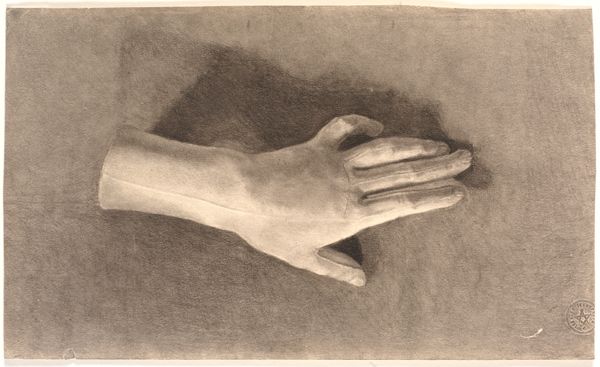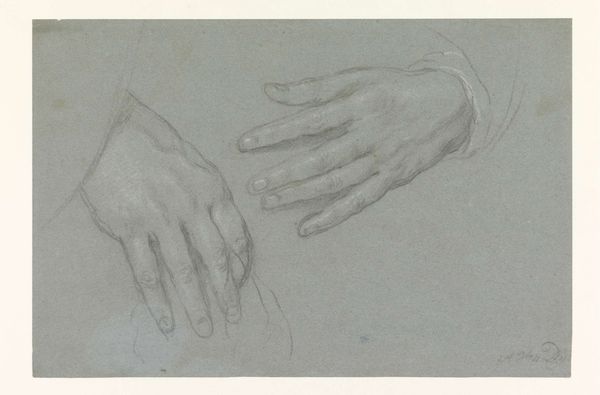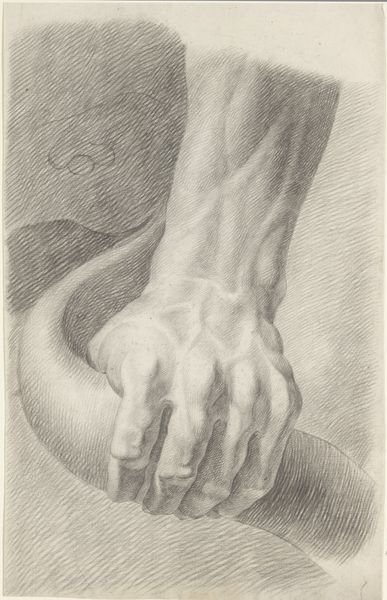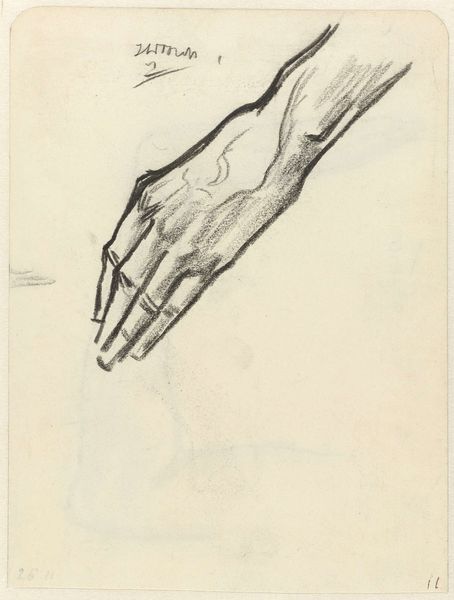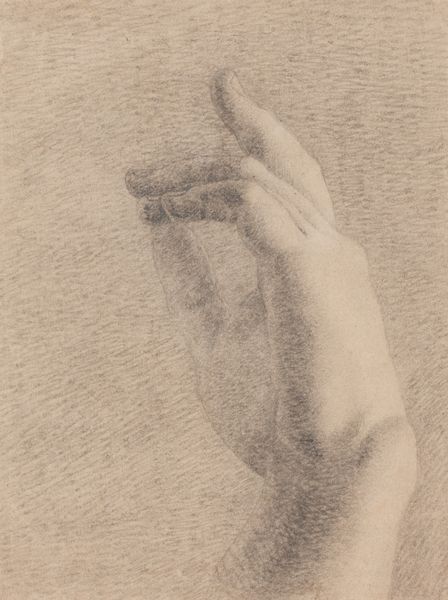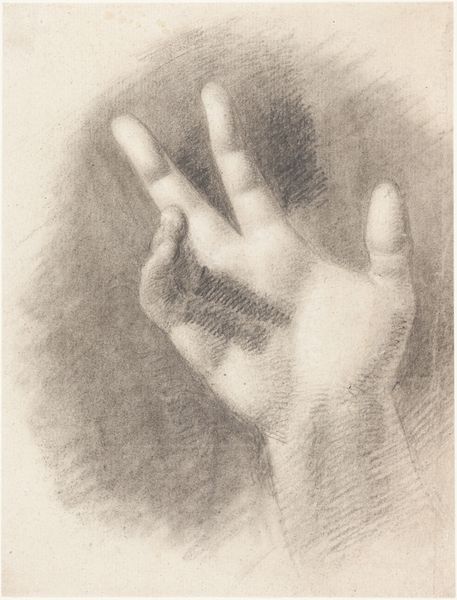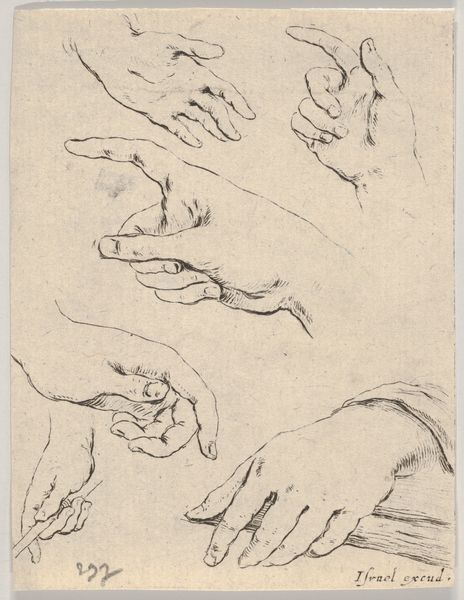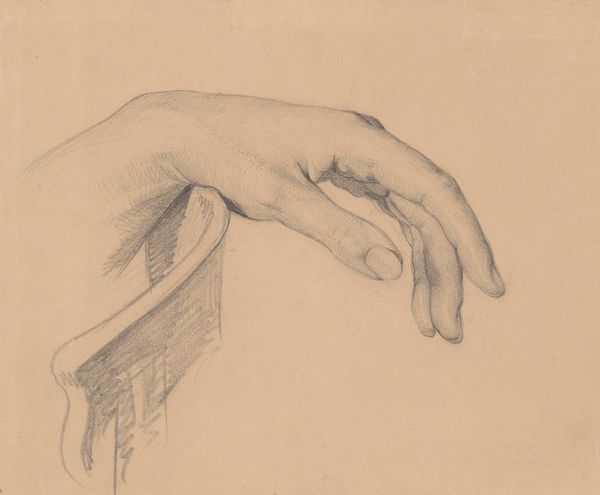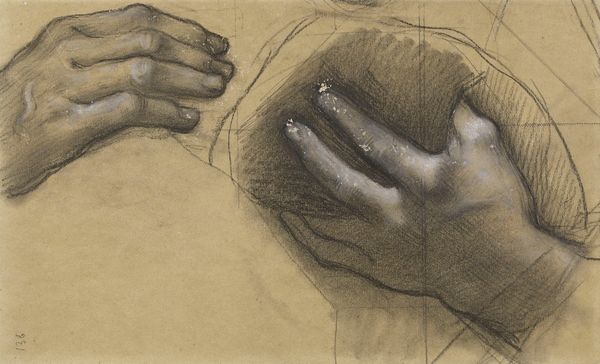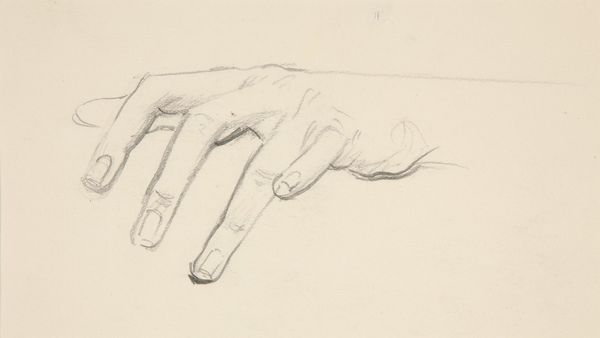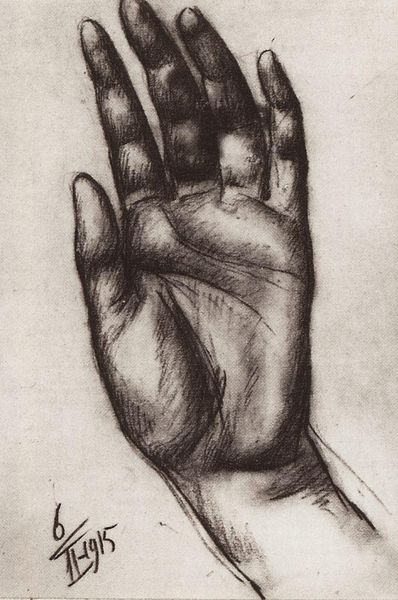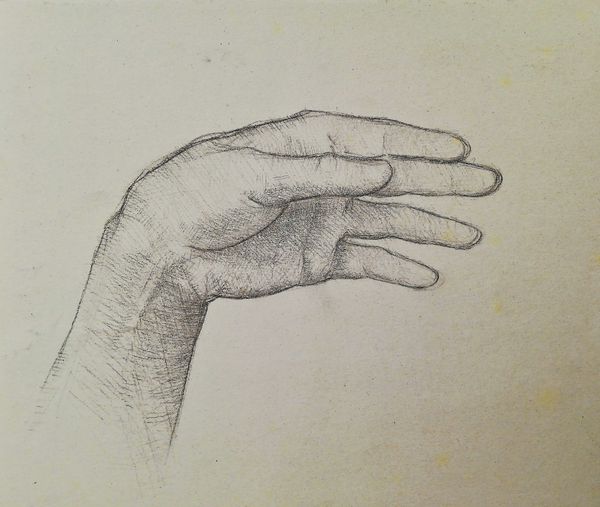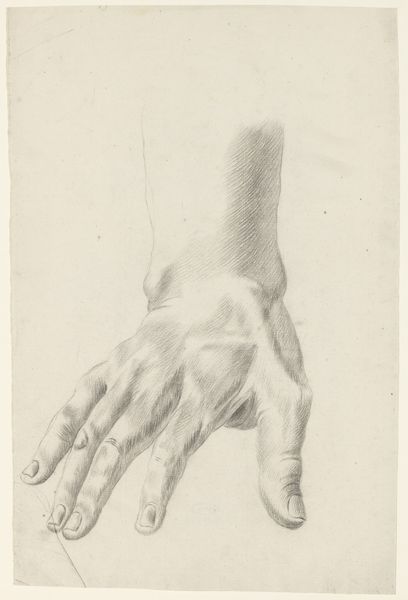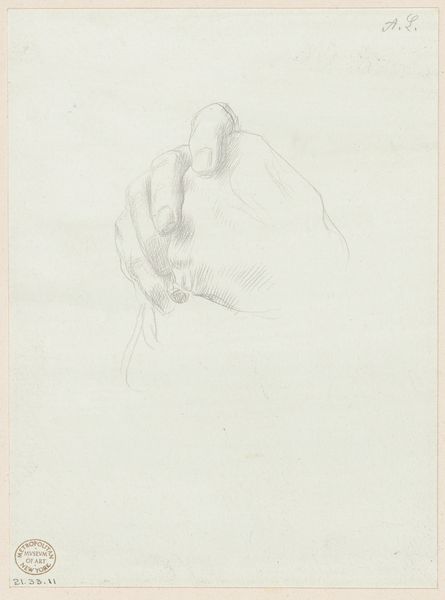
drawing, pencil
#
pencil drawn
#
drawing
#
form
#
pencil drawing
#
pencil
#
realism
Dimensions: 211 mm (height) x 169 mm (width) (bladmaal)
Curator: This delicately rendered drawing, dating from between 1830 and 1833, is entitled "Studie af hånd," or "Study of a Hand" and is attributed to Dankvart Dreyer. It resides here at the SMK, the Statens Museum for Kunst. What's your immediate reaction? Editor: An interesting study in grey. I’m struck by the subtle rendering of light across the fingers—the softness achieved purely through pencil strokes is rather beautiful. Curator: It is quite remarkable. Considering Dreyer’s social context—the burgeoning art academies of the 19th century and the increasing professionalization of art—studies like these were critical. Artists needed to master anatomy and form before tackling grander historical or mythological paintings. Editor: Precisely. Look at how the shading defines the bone structure, hinting at the tendons beneath. There is this emphasis on capturing the essence of form itself. It almost transcends being simply a hand. It becomes about pure representation. Curator: Do you see how this could have been used as preparatory work? Perhaps a sketch toward depicting laborers or maybe biblical scenes that had to become realistic, reflecting the world around them. The hand became more than an appendage. Editor: Possibly, although that also could apply more broadly to Realist movements when such a close study could almost be presented for observation. We see it as part of his development as an artist during the time period of Realism's birth. Curator: This pencil study allows us to witness that intimate moment of artistic creation in an age of academic study. Its preservation offers valuable insight into the institutional development of art production. Editor: I completely agree! The study exemplifies form and tone but really its pure execution gives it true substance. Curator: Looking at art objects in this way shows that artistic merit is complex and tied up with how an artist's practice operates socially and institutionally. Editor: And a study in hands shows such elegance with shape and material as a demonstration of the artist's command over the fundamentals. Thank you for discussing that, curator.
Comments
No comments
Be the first to comment and join the conversation on the ultimate creative platform.
